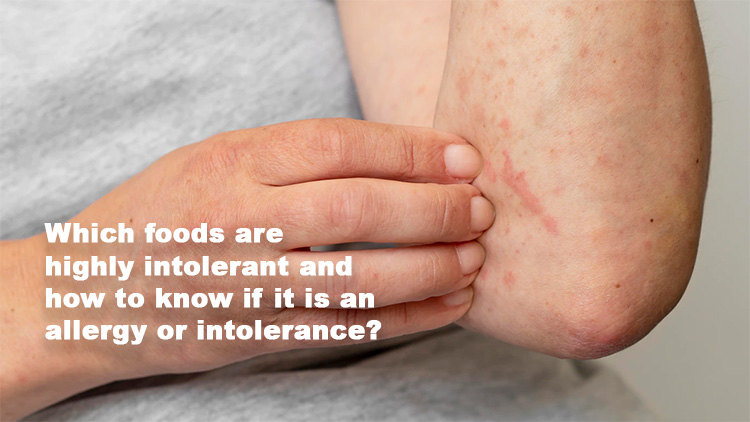Food intolerance is a common condition that affects many people. It refers to any symptoms you may experience when eating certain foods. These can include bloating, stomach cramps, diarrhea and many more. Intolerance occurs when the digestive system is unable to fully digest a particular type of food. If you suspect that you have intolerance it’s important to see your GP who can then refer you for further tests if necessary.
Highly intolerant foods are-
Dairy, gluten, amines (stored and fermented food), FODMAPs (Apples, Soft
cheeses, Breads, Beans, Lentils) , Sulfites (chemicals that are primarily used as preservatives-beer, Dried fruits, canned vegetables, tea).
Different between food intolerance and food allergy
Food intolerance- When food enters the digestive tract, it gets disintegrated into several food proteins. Out of the various protein molecules, few undigested proteins bind with the immunoglobulin and form complexes called IgG. Abundant immune complexes lead to inflammatory reactions causing different symptoms and conditions. Hence, food intolerance is an inflammatory reaction caused due to the body’s inability to digest certain foods and this further leads to other symptoms like nausea, vomit, swelling, migraine and much more.
Must read: Food Allergy vs Food Intolerance
A food allergy occurs when your immune system overreacts to certain proteins found in certain foods (like peanuts). The body’s response causes symptoms like swelling of the lips/mouth/tongue; difficulty breathing; rashes; vomiting; stomach pains; diarrhea or nausea within two hours of eating the allergen—and sometimes even sooner than two hours after ingestion!
The most common symptoms of an allergy to nuts are hives (raised bumps on the skin), itching and swelling of the mouth. People who have a severe allergy may experience breathing problems, abdominal cramps and vomiting if they eat nuts.
How to know if it is an allergy or intolerance
Food intolerance symptoms are similar to those of food allergies, but they tend to be milder and more delayed in onset.
Symptoms can also be delayed between 12 and 72 hours after ingestion of a certain food. These symptoms could last anywhere from a few days to several weeks.
Must read: What are the first signs of Food Intolerance?
Food intolerance symptoms may be different from food allergy symptoms. In general, food intolerance symptoms are more likely to affect the digestive system and can include bloating, stomach pain, diarrhea or constipation. Food intolerances can also cause skin rashes (eczema is a common sign of intolerance to dairy), headaches and fatigue.
Food sensitivities are not always severe enough to cause these types of reactions but they can still make you feel unwell.
Intolerance occurs when the digestive system is unable to fully digest a particular type of food.
Food intolerance is not life-threatening but you may have to avoid certain foods in order to prevent unpleasant symptoms from recurring.
Conclusion
If you have been experiencing frequent stomach pain and nausea or vomiting, it is important to see a doctor. You may be suffering from food intolerance or allergy. The main difference between these two conditions is that allergies are caused by an immune system response whereas intolerances do not involve the immune system directly.

